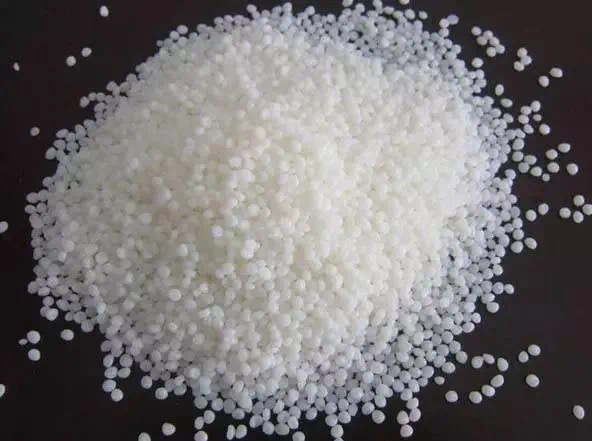Please note: HIPS is often erroneously described as PS, even the recycling symbol is also used as 06/PS, which is usually also represented by SB.HIPS is the correct name.

General performance
Due to the incorporation of butadiene, SB is no longer transparent, and transparent SB must be specially modified (for example, BASF's Styroux or Phillips Petroleum's K resin). Because HIPS has very good thermoforming properties, it is considered the "reference plastic" for thermoforming.
HIPS started to develop rubber modified polystyrene (high impact polystyrene, HIPS) in 1950, mainly to solve the impact brittleness of PS. By adding rubber to the polystyrene substrate, various grades of high-impact polystyrene with different properties can be produced.
In recent years, various special grades of HIPS have been developed. There are flame retardant grades, stress crack resistance grades, high gloss grades, extremely high impact strength grades, glass fiber reinforced grades and low residual volatilization grades. They are used in many applications It has been able to compete with expensive engineering resins in the field.
Chemical stability
Similar to ordinary PS, some aspects are worse. Due to the addition of butadiene, HIPS is more sensitive to aging than PS and should be shielded from ultraviolet rays.
HIPS is developed on the basis of PS. PS has good transparency, high hardness, and is easy to form and process. However, it is most prone to brittle fracture and is restricted in use. In order to increase its performance and improve its brittle fracture, butadiene rubber is added to increase its toughness during polymerization. After toughening, the HIPS impact toughness is four times higher than that of PS.
According to the amount of addition, it can be divided into low-impact PS, medium-impact PS, and high-impact PS. However, the addition of rubber reduces the surface gloss. After modification, the use temperature of the material is increased. The heat distortion temperature is 96┬░C. HIPS is also a flammable plastic with a limiting oxygen index of 17.8. The flame is orange-yellow and accompanied by a large amount of black smoke during combustion. The combustion characteristics are softened and foamed. , Burnt, with a special smell of styrene monomer.
HIPS can be processed by many traditional molding methods, such as injection molding, structural foam molding, sheet and film extrusion, thermoforming, and injection blow molding. HIPS resin absorbs water slowly, so it does not need to be dried under normal circumstances. Sometimes too much moisture on the surface of the material will be absorbed, thereby affecting the appearance of the final product. Excess moisture can be removed by drying at 75┬░C for 2-3 hours.
Extrusion of films, sheets and profiles is the most used processing and molding method for HIPS. Impact-resistant polystyrene has a wide processing range, so it becomes one of the most easily thermoformed resins. Generally use ordinary extrusion equipment resin melting temperature is 205-255Ôäâ
HIPS has excellent thermal stability and shear stability, and can use a large amount of recycled materials without reducing product performance. The amount of recycled materials used in thermoforming can be as high as 60%.
Special materials
HIPS can also use flocking, metallization, conductivity and other modification methods.
Due to the low barrier properties of HIPS to gas and water vapor, it needs to be made into a composite sheet when used as a packaging material:
HIPS/PE, HIPS/PEHIPS, HIPS/EVAL/HIPS, HIPS/EVOH/PE, HIPS/PETG, PETG/HIPS/HDPE/HIPS/PETG.
Application range:
The biggest exclusive use of HIPS is as packaging and disposable materials, especially food packaging materials and food tableware. Main applications include daily packaging containers. Cups, various covers and trays for vending machines and dispensing. Bowl and so on. Disposable products such as dishes, bottle caps, safety razors, pen holders, etc. are also part of the high consumption of HIPS.
In recent years, special products have become the focus of HIPS product development. Newly developed HIPS products can compete with engineering resins in some application fields, and some are much higher in quality than current products. Instruments and consumer appliances are one of the growing markets for HIPS products, including small meters and refrigerator inner walls. And internal parts, TV housings, air-conditioning parts, business machines, and audio and video cassettes.
Special grades of HIPS resins have replaced expensive engineering plastics in many fields. A kind of ultra-high impact strength and high temperature resistant HIPS can even be used as automotive interior parts.
A bonding process using 20% PS in solvents (toluene, dichloromethane, butyl acetic acid) as a binder. Through the welding process of hot plate, pulse heating and ultrasonic heating.
From Thermoforming
Contact: Max
Phone: +8618968044117
Tel: +8618968044117
Email: max@hzkesheng.com
Add: Gaoqiao Village,Fuyang District,Hangzhou,311307,China